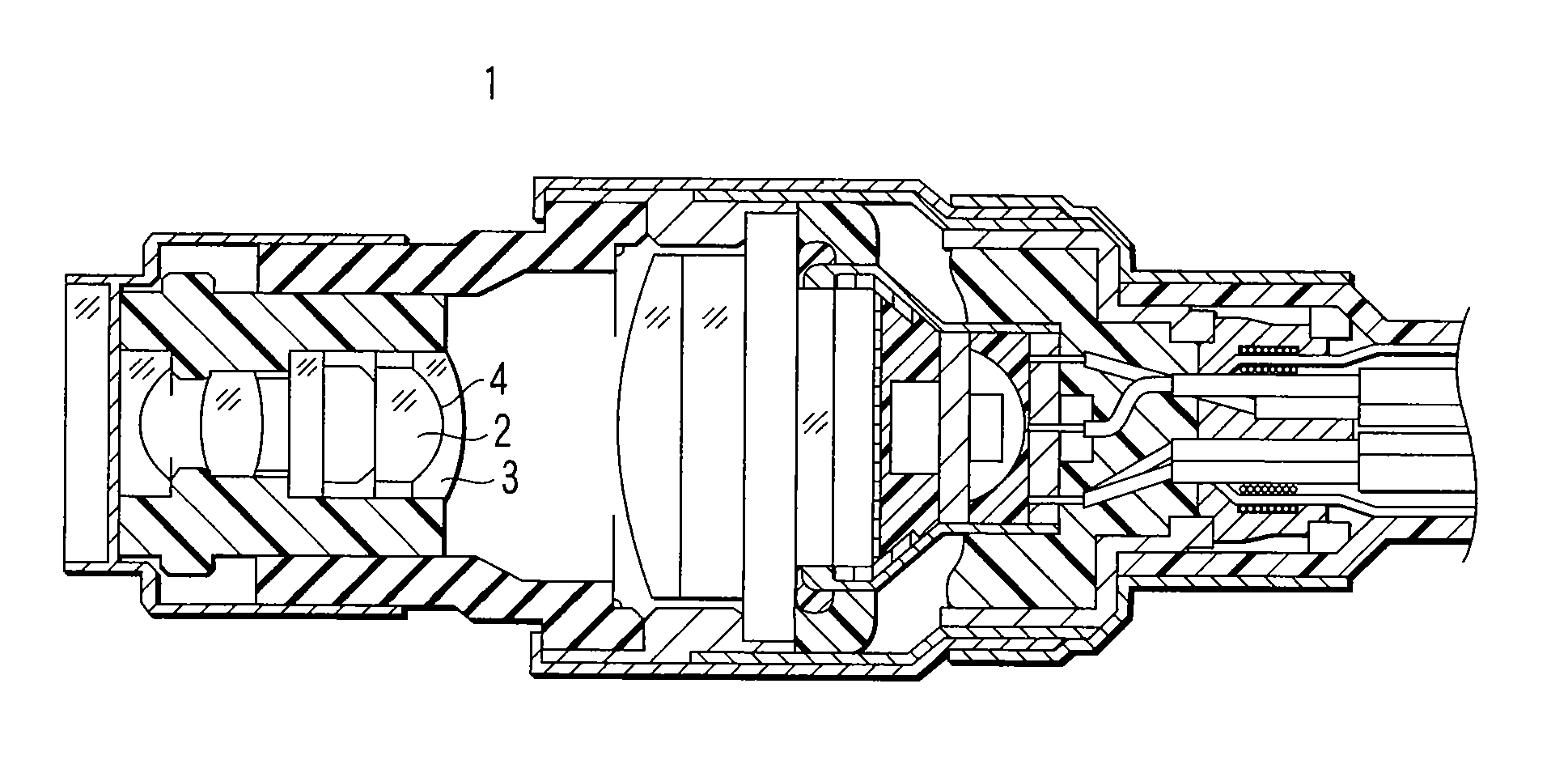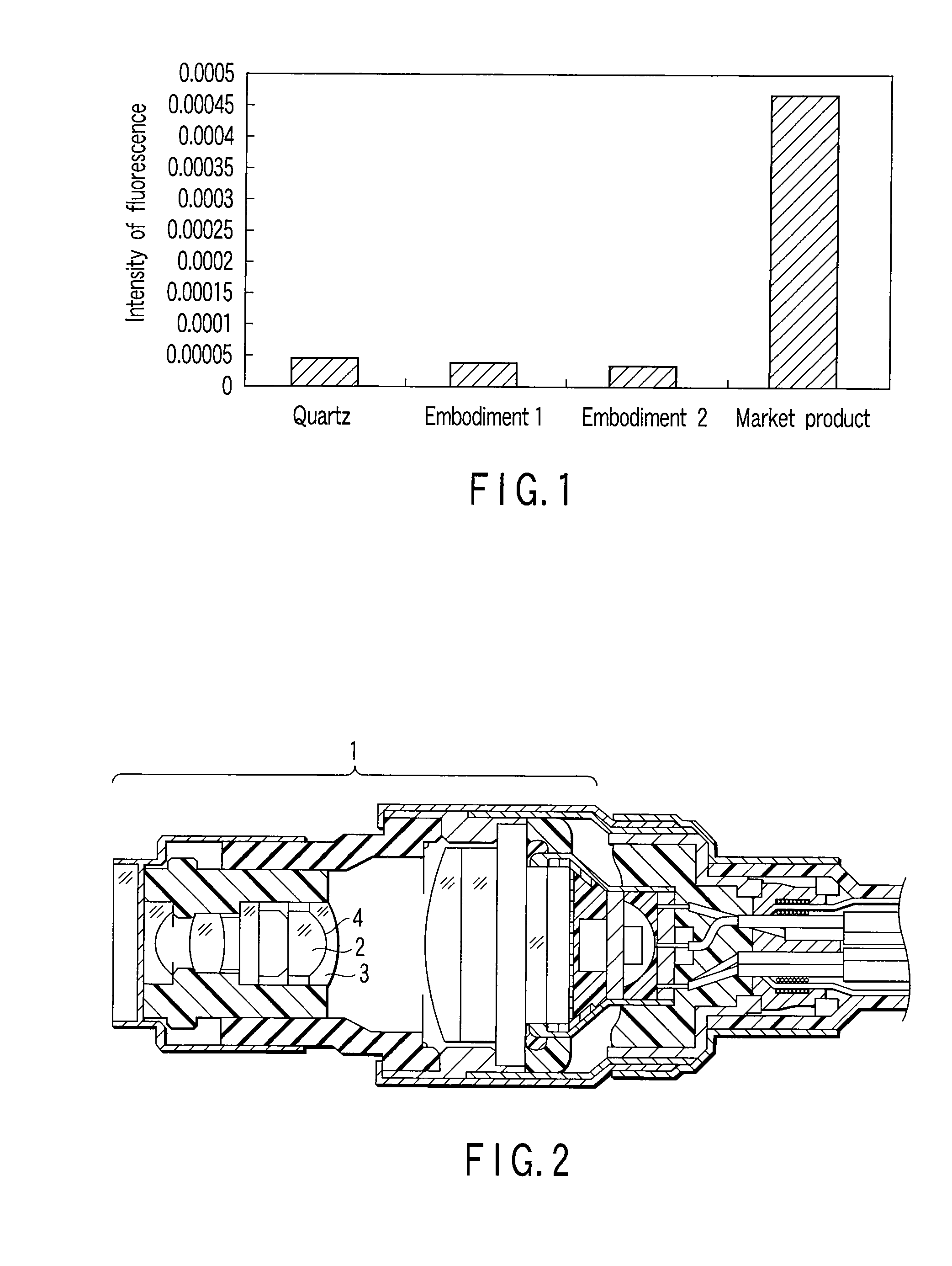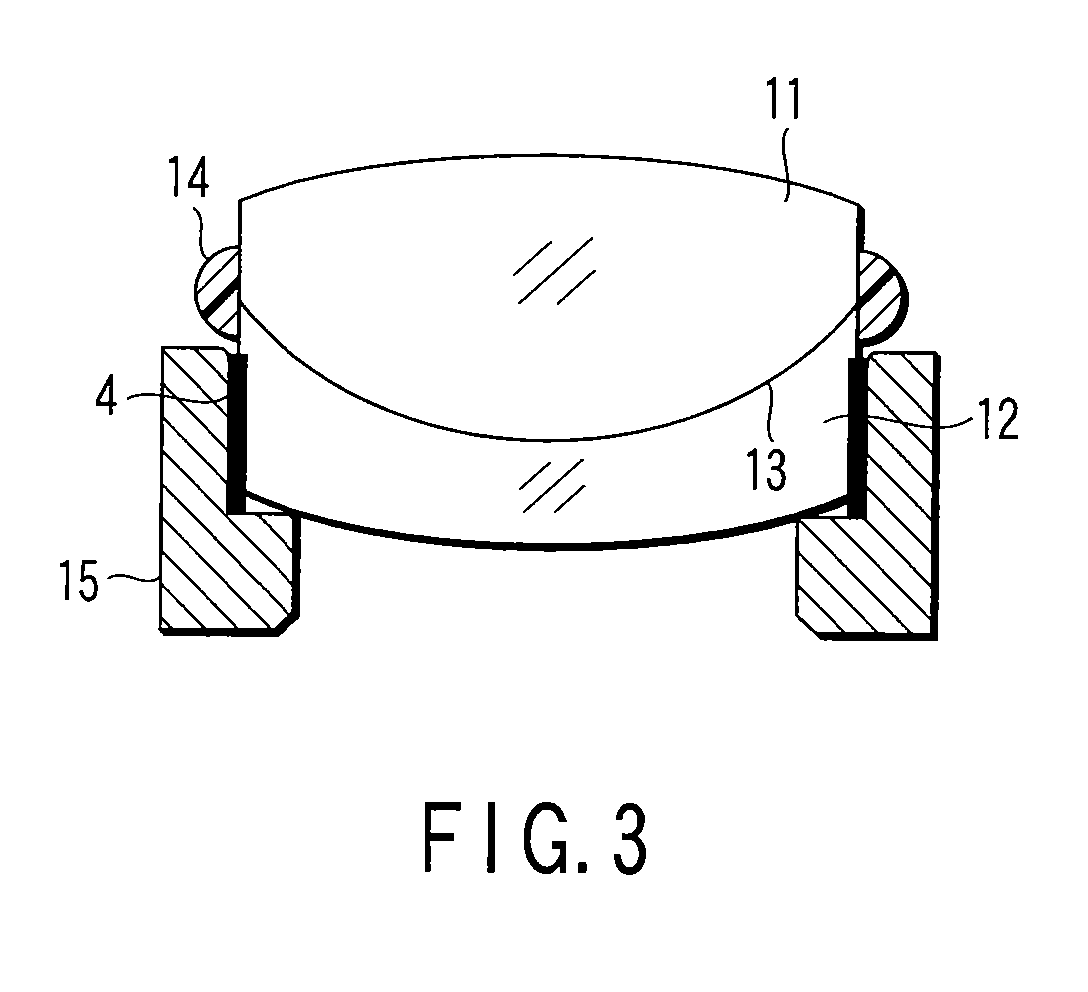Optical device for fluorescence imaging
an optical device and fluorescence imaging technology, applied in the field of optical devices for fluorescence imaging, can solve the problems of difficult bonding of components, inability to consider the contribution of the adhesive to be employed for the bonding between the lens and the lens, and deteriorating the contrast of the image of observation, so as to achieve high contrast, reduce noise generation, and reduce the effect of nois
- Summary
- Abstract
- Description
- Claims
- Application Information
AI Technical Summary
Benefits of technology
Problems solved by technology
Method used
Image
Examples
example 1
[0045]FIG. 2 is a cross-sectional view showing a distal end of the insert portion of the endoscope according to Example 1 of the present invention. The distal end of the insert portion of the endoscope shown in FIG. 2 is constructed such that an objective optical system for observation 1 equipped with a plurality of lenses is built into the distal main body. This objective optical system was constructed to include a bonded lens comprising a lens 2 and a lens 3 which were bonded to each other by the bonding agent (silicone adhesive) 4 of the aforementioned embodiment 1.
[0046] More specifically, a small quantity of the silicone adhesive 4 was coated on the bonding surface of the lens 3 and then the lens 2 was superimposed onto the lens 3 and the silicone adhesive 4 was allowed to spread all over the joint surface. The resultant body was left to stand at room temperature or heated to cure the silicone adhesive 4, thereby manufacturing a bonded lens.
[0047] In this example, the silicon...
example 2
[0050]FIG. 3 is a cross-sectional view showing representative bonded lens in the objective lens of the fluorescence observing microscope. In this case, the first lens 11 and the second lens 12 are bonded together by making use of the silicone oil 13 of the aforementioned embodiment 2. A sealer is applied to the outer periphery of the bonded portion of bonded lens where the first lens 11 and the second lens 12 are contacted with each other. The clearance between the first lens 11 and a metallic mirror frame 15 is filled with the silicone adhesive 4 of the aforementioned embodiment 1, thereby fixedly bonding them.
[0051] Since the silicone adhesive 4 and the silicone oil 13 employed in this example were all formulated so as to minimize the contents of platinum group metallic catalyst, of multiple bond group, and of impurities such as transition metals and rare earth elements, it was possible to inhibit the generation of autofluorescence.
[0052] Especially, the silicone oil 13 employed...
PUM
| Property | Measurement | Unit |
|---|---|---|
| excitation wavelength | aaaaa | aaaaa |
| excitation wavelength | aaaaa | aaaaa |
| excitation wavelength | aaaaa | aaaaa |
Abstract
Description
Claims
Application Information
 Login to View More
Login to View More - R&D
- Intellectual Property
- Life Sciences
- Materials
- Tech Scout
- Unparalleled Data Quality
- Higher Quality Content
- 60% Fewer Hallucinations
Browse by: Latest US Patents, China's latest patents, Technical Efficacy Thesaurus, Application Domain, Technology Topic, Popular Technical Reports.
© 2025 PatSnap. All rights reserved.Legal|Privacy policy|Modern Slavery Act Transparency Statement|Sitemap|About US| Contact US: help@patsnap.com



